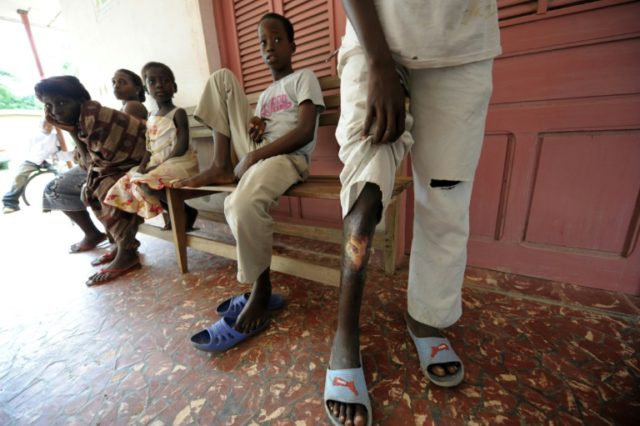Sydney (AFP) – The spread of a flesh-eating bacterial condition in Australia sparked calls Thursday for more government-funded research into the disease, which is normally limited to developing countries.
Buruli ulcer, a leprosy-like disease that rots flesh, is usually found in parts of Africa and was named after the Ugandan village where it was discovered.
It was first diagnosed in Australia’s Victoria state in the 1930s and a growing number of cases have hit Bellarine Peninsula south of Melbourne.
“It seems to us that it is an outbreak in (native marsupial) possums in (Bellarine), connecting to humans directly or indirectly through biting insects,” Paul Johnson of Melbourne’s Austin Hospital told AFP.
Johnson said the disease has crossed the bay that separates Bellarine from adjacent Mornington Peninsula and warned “the number of cases are continuing to increase”.
Buruli ulcer has previously been reported in the states of Queensland, Western Australia and New South Wales, as well as the Northern Territory.
In Victoria, there have been 159 cases this year, compared to 102 for the same period in 2016, the state’s health department said.
One victim, 13-year-old Mornington Peninsula girl Ella Crofts, set up an online petition urging more funding for research.
“I started feeling pain in my knee in early April,” she said on the petition page.
“Slowly it got worse, with my knee becoming swollen and inflamed, until one day, the skin started breaking down.”
Crofts said she was contacted by federal Health Minister Greg Hunt late Wednesday, who promised the government would “support further research” into the disease.
Victoria health officials said in a statement they were collecting the faeces of possums to find out if they contained the bacterium that causes the ulcer.
World Health Organisation data showed 2,037 new cases reported from 13 nations in 2015, with the majority in West and Central Africa, including Benin, Cameroon and Ghana.
There is no way to prevent the disease and its exact mode of transmission is still unknown, the UN body said.
Johnson, an infectious diseases specialist, said it was a “great mystery as to why you get these pockets scattered so unevenly throughout the world”.
“We don’t really know why it came here and we don’t know why it likes some environments,” he said, adding that it could be treated with a combination of surgery and antibiotics.

COMMENTS
Please let us know if you're having issues with commenting.